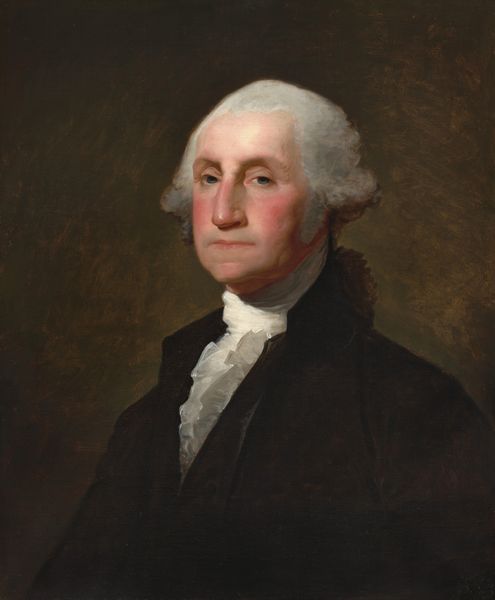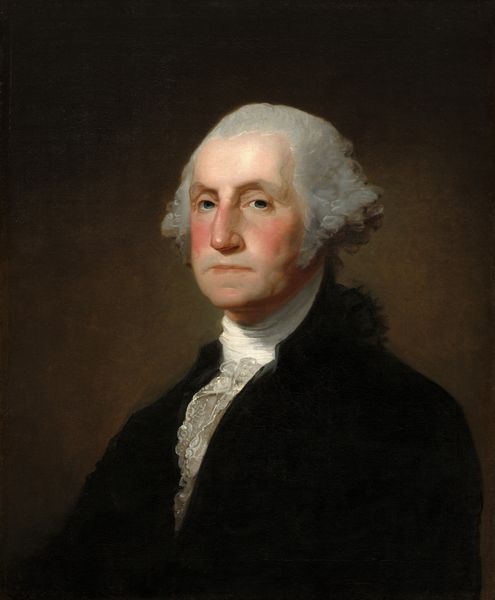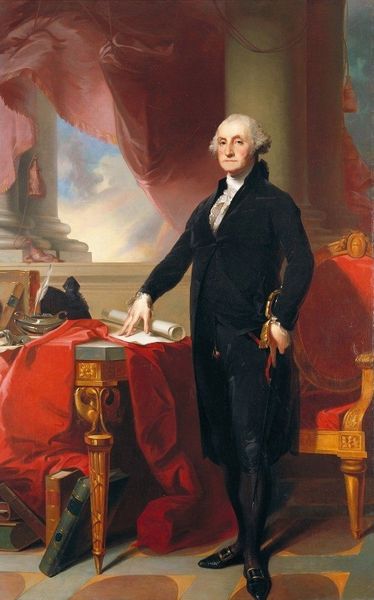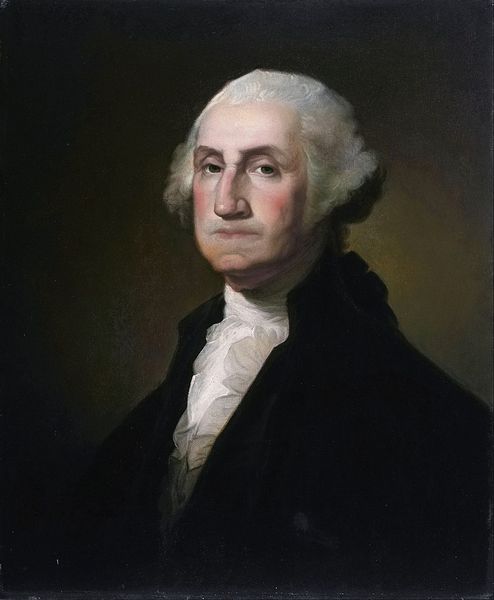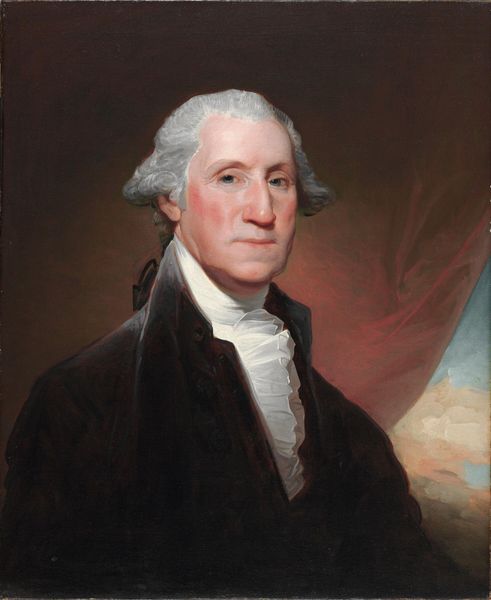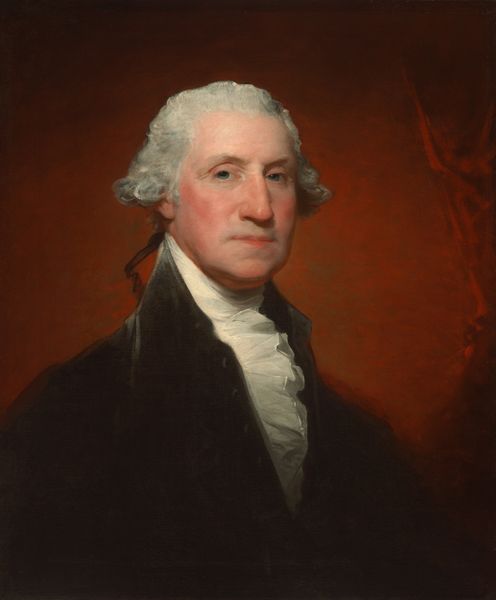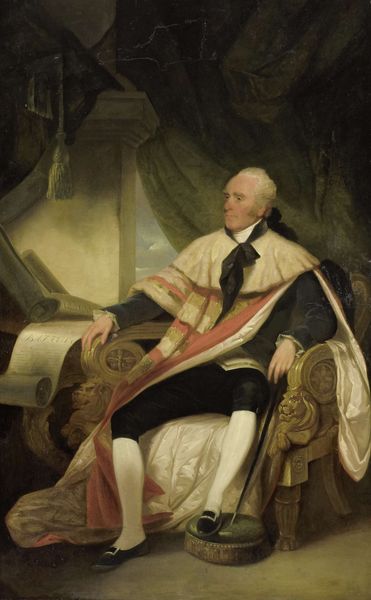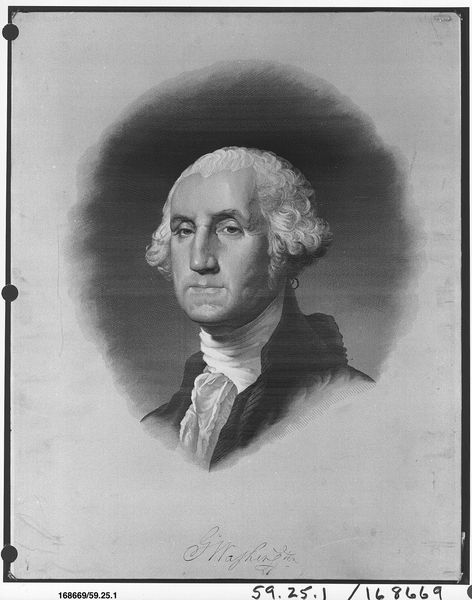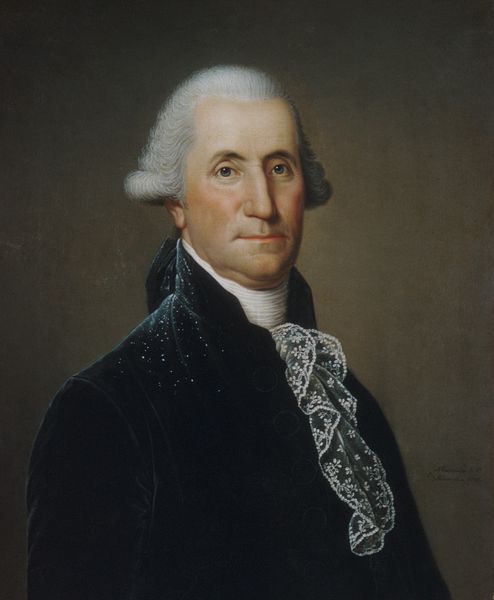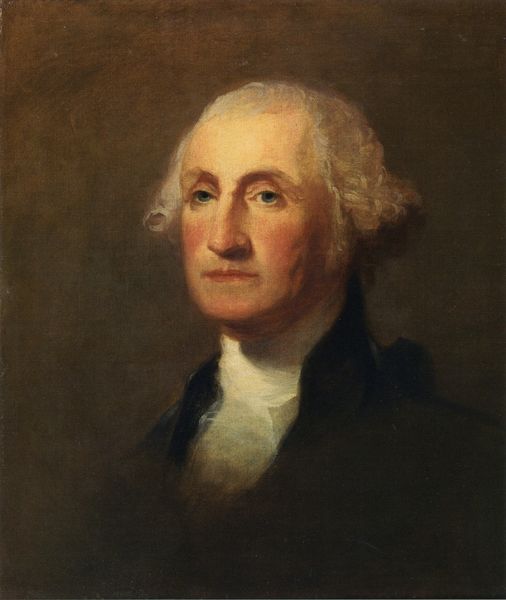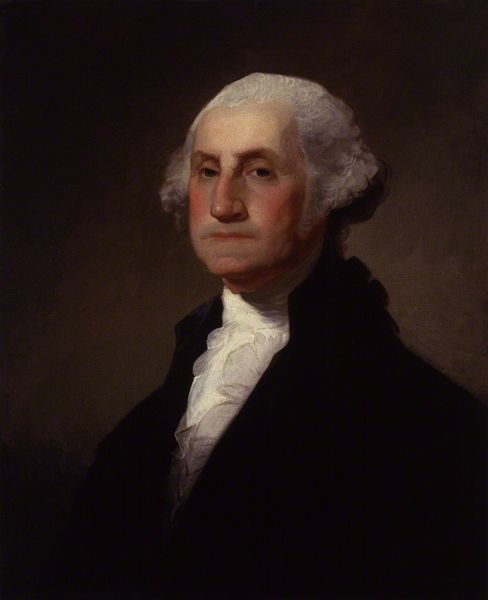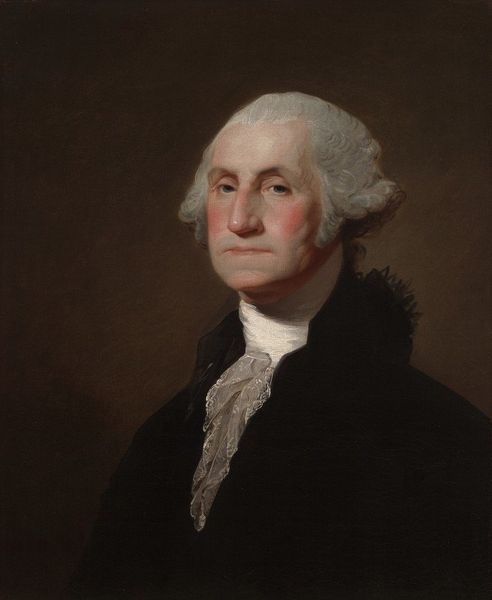
oil-paint
#
portrait
#
neoclacissism
#
character portrait
#
oil-paint
#
genre-painting
#
history-painting
#
academic-art
#
portrait art
#
fine art portrait
Copyright: Public domain
Curator: Before us, we see Alonzo Chappel’s rendering of *George Washington*, painted around 1860. The artist employed oil paints, and the composition adheres to the academic art style, echoing Neoclassical aesthetics while fitting within the history painting genre. Editor: First impression? Slightly theatrical! It's like Washington's giving a performance—the red drapery backdrop certainly adds to that sense, as though we are in a theater, ready for the show to begin. It feels very staged, stiff, even. Curator: It is certainly staged. These formal portraits frequently sought to convey not only likeness but also authority and virtue. Look at how he’s positioned. Holding what seems to be a law book, but I suspect the saber there is more significant of all. He is seated upright, an image meant to project strength, reason, and legitimate governance, despite the changing socio-political landscapes present at the time, especially considering this work was created on the cusp of the Civil War. Editor: I see what you mean about conveying authority, the stern face does that. But all the same, doesn’t he also seem rather... unapproachable? Trapped, perhaps, by the very expectations of what he should be? It looks a bit lonely actually! Or is that just me over-romanticizing? Curator: Well, you aren't entirely off the mark, but remember, during the mid-19th century in America, representations of national heroes often served purposes beyond mere visual documentation; they were tools to reinforce particular notions of nationhood, leadership, and even morality during this time of immense cultural tension, and they continue to hold significant meaning as a symbolic marker within the collective American conscience. Editor: All right, I yield, but only slightly. It seems as though Chappel created more than just a figure on canvas, they immortalized an American myth, whether they realized that or not. Regardless, though, these staged and slightly stale aesthetics of these Neoclassical academic renditions make you feel somewhat detached from who the person truly was, and maybe even encourage the construction of idols rather than true people! Thank you, this has been insightful. Curator: Indeed, thank you; it is precisely those layered interpretations and socio-historical undertones that make examining these kinds of artifacts so fascinating in our current landscape, and a true testament of the ever evolving narrative surrounding historical art, leadership and politics in an international context.
Comments
No comments
Be the first to comment and join the conversation on the ultimate creative platform.
